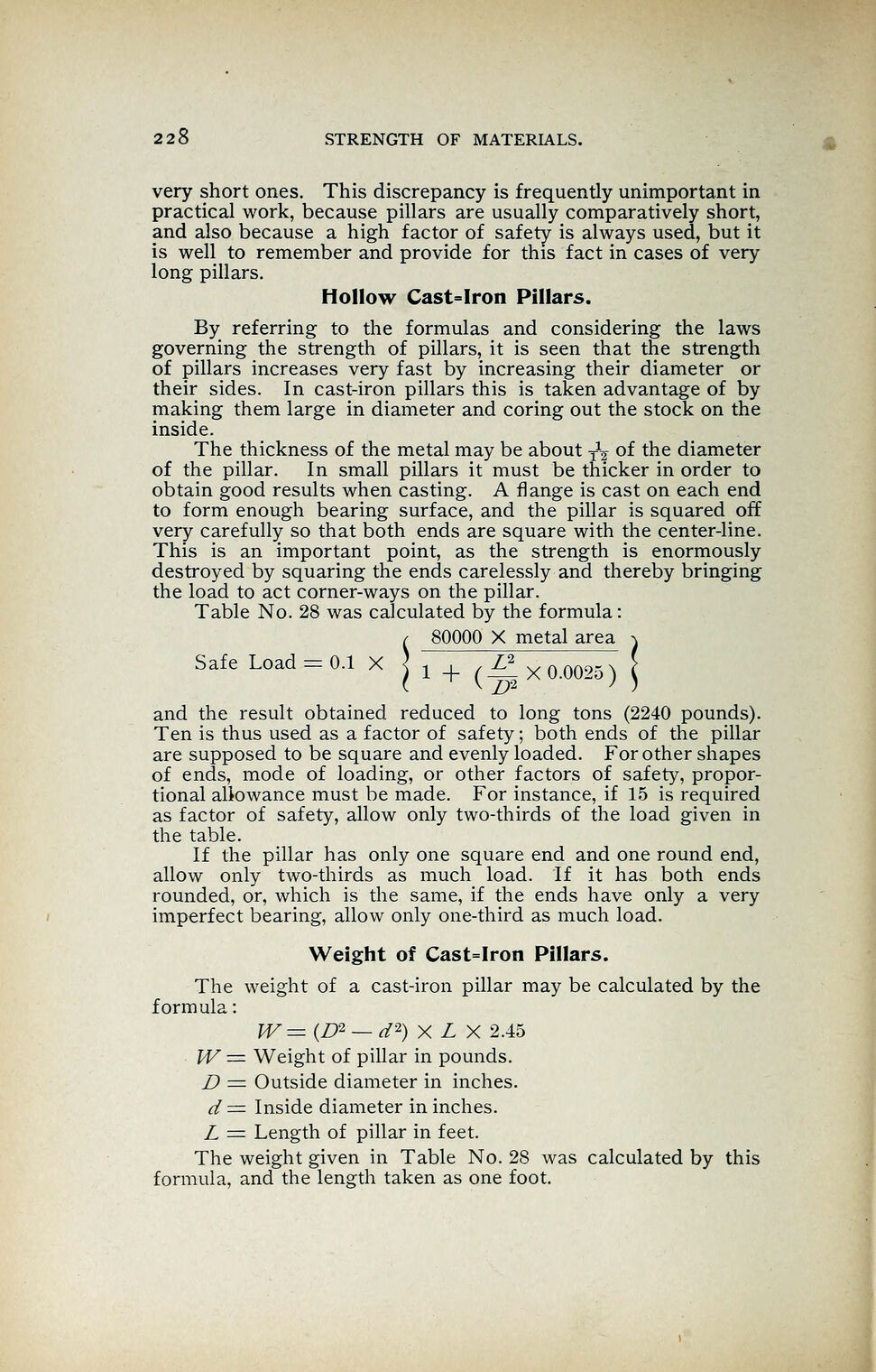
Full resolution (JPEG) - On this page / på denna sida - Strength of Materials - Table of safe load on Pillars - Hollow cast-iron pillars - Weight of cast-iron pillars

<< prev. page << föreg. sida << >> nästa sida >> next page >>
Below is the raw OCR text
from the above scanned image.
Do you see an error? Proofread the page now!
Här nedan syns maskintolkade texten från faksimilbilden ovan.
Ser du något fel? Korrekturläs sidan nu!
This page has never been proofread. / Denna sida har aldrig korrekturlästs.
2 28 STRENGTH OF MATERIALS.
very short ones. This discrepancy is frequently unimportant in
practical work, because pillars are usually comparatively short,
and also because a high factor of safety is always used, but it
is well to remember and provide for this fact in cases of very
long pillars.
Hollow Cast-iron Pillars.
By referring to the formulas and considering the laws
governing the strength of pillars, it is seen that the strength
of pillars increases very fast by increasing their diameter or
their sides. In cast-iron pillars this is taken advantage of by
making them large in diameter and coring out the stock on the
inside.
The thickness of the metal may be about ^ of the diameter
of the pillar. In small pillars it must be thicker in order to
obtain good results when casting. A flange is cast on each end
to form enough bearing surface, and the pillar is squared off
very carefully so that both ends are square with the center-line.
This is an important point, as the strength is enormously
destroyed by squaring the ends carelessly and thereby bringing
the load to act corner-ways on the pillar.
Table No. 28 was calculated by the formula
:
80000 X metal area >>
Safe Load = 0.1 X 1+ /^ x 0.0025)
and the result obtained reduced to long tons (2240 pounds).
Ten is thus used as a factor of safety ; both ends of the pillar
are supposed to be square and evenly loaded. For other shapes
of ends, mode of loading, or other factors of safety, propor-
tional allowance must be made. For instance, if 15 is required
as factor of safety, allow only two-thirds of the load given in
the table.
If the pillar has only one square end and one round end,
allow only two-thirds as much load. If it has both ends
rounded, or, which is the same, if the ends have only a very
imperfect bearing, allow only one-third as much load.
Weight of Cast=Iron Pillars.
The weight of a cast-iron pillar may be calculated by the
formula
:
lV=(D2 — d2
) X L X 2.45
W= Weight of pillar in pounds.
D = Outside diameter in inches.
d = Inside diameter in inches.
L = Length of pillar in feet.
The weight given in Table No. 28 was calculated by this
formula, and the length taken as one foot.
<< prev. page << föreg. sida << >> nästa sida >> next page >>